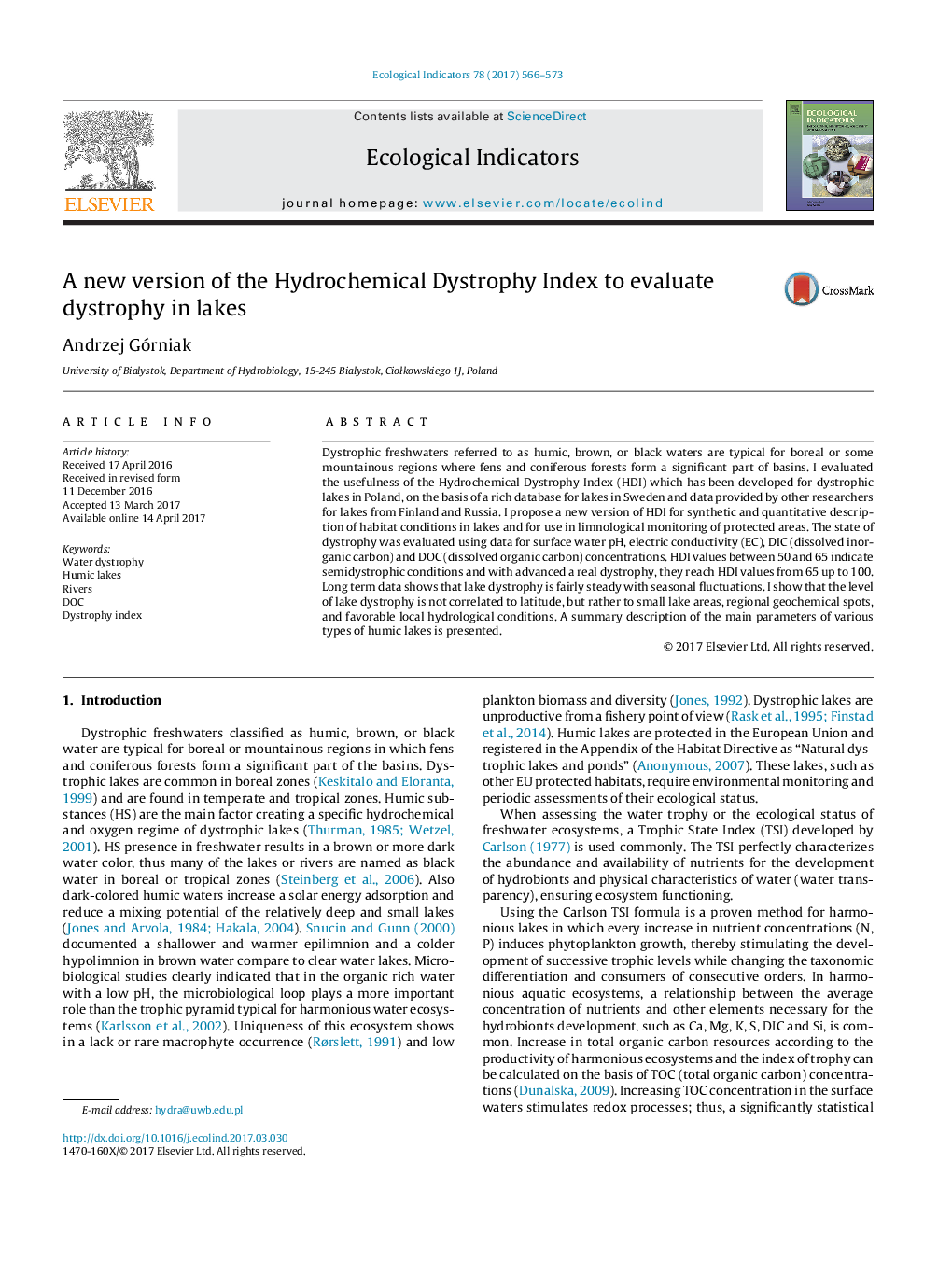| Article ID | Journal | Published Year | Pages | File Type |
|---|---|---|---|---|
| 5741663 | Ecological Indicators | 2017 | 8 Pages |
Dystrophic freshwaters referred to as humic, brown, or black waters are typical for boreal or some mountainous regions where fens and coniferous forests form a significant part of basins. I evaluated the usefulness of the Hydrochemical Dystrophy Index (HDI) which has been developed for dystrophic lakes in Poland, on the basis of a rich database for lakes in Sweden and data provided by other researchers for lakes from Finland and Russia. I propose a new version of HDI for synthetic and quantitative description of habitat conditions in lakes and for use in limnological monitoring of protected areas. The state of dystrophy was evaluated using data for surface water pH, electric conductivity (EC), DIC (dissolved inorganic carbon) and DOC (dissolved organic carbon) concentrations. HDI values between 50 and 65 indicate semidystrophic conditions and with advanced a real dystrophy, they reach HDI values from 65 up to 100. Long term data shows that lake dystrophy is fairly steady with seasonal fluctuations. I show that the level of lake dystrophy is not correlated to latitude, but rather to small lake areas, regional geochemical spots, and favorable local hydrological conditions. A summary description of the main parameters of various types of humic lakes is presented.
